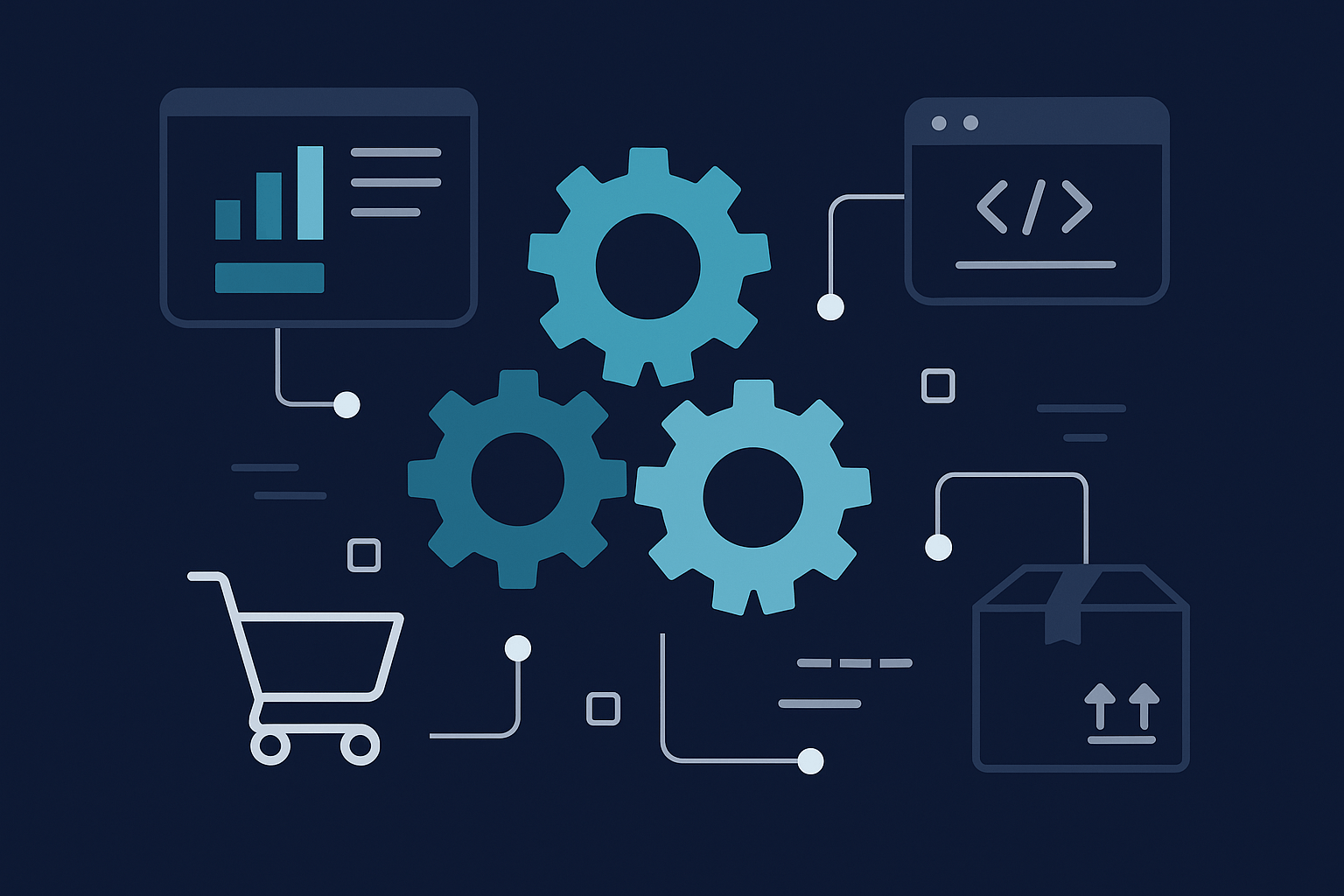Automation in Everyday Online Shops
How online shops save time and costs with automation: from product imports to translations and order processing. Practical examples and tips.
Johannes Wigandt

Why automation matters
In modern e‑commerce and the ongoing digital transformation of 2025, speed, efficiency and scalability are more important than ever. Competitive pressure is constant; shop operators need to automate processes to keep up. Automation boosts efficiency, controls costs and frees resources. It also reduces manual errors and standardises workflows — a clear competitive advantage.
Typical areas for automation
1. Product and data imports
- Modern shops rely on API‑first systems to integrate supplier data seamlessly.
- Automated interfaces to suppliers (e.g. LEDIN) map product attributes for consistent, correct data in the shop.
- Multi‑supplier setups are handled efficiently, keeping catalogues current.
- Regular syncs of prices, stock and categories save time and reduce manual errors.
- Retailers can react quickly to market changes and adjust assortments.
2. Translations & internationalisation
- Tools like DeepL offer automatic translations and improve SEO via multilingual content.
- Critical for shops selling in multiple markets and growing international visibility.
- Automated translation workflows speed up go‑to‑market and cut manual effort.
- Tight CMS/shop integration streamlines i18n and minimises errors.
3. Orders and inventory
- Incoming orders sync automatically into ERPs like SAP or Microsoft Dynamics for seamless process chains.
- Dropshipping benefits from real‑time stock/lead‑time updates to avoid overselling.
- Inventory stays up‑to‑date for accurate availability.
- Alerts for low stock/backorders support planning and improve customer satisfaction.
4. Customer communication
- AI‑powered chatbots provide 24/7 support and deflect common queries.
- Marketing automation enables personalised emails based on behaviour and preferences.
- Automated customer journeys strengthen loyalty with relevant, timely touchpoints.
- Order confirmations, shipping updates and returns status go out automatically — professional service builds trust.
5. Reporting & monitoring
- BI tools aggregate sales, stock and behaviour into clear dashboards.
- Automated alerts flag issues or unusual patterns early.
- Teams track key metrics without manual data wrangling.
- Monitoring safeguards uptime and performance, enabling continuous optimisation.
Benefits of automation
- Time savings: Staff focus on value‑adding tasks instead of routine.
- Fewer errors: Consistent, reliable data processing improves quality.
- Scalability: Grow faster and enter new markets without process bottlenecks.
- Cost savings: Less manual work reduces operating costs and improves control.
- Competitive edge: Faster reactions and efficient flows secure your position.
- Better CX: Faster processes, personalised comms and smooth checkout.
Challenges
- Initial effort: Planning, setup and testing require time and resources.
- Change management: Teams need onboarding and training to adopt new flows.
- Cost/benefit: Investments should be weighed against expected returns.
- Data quality: Automation depends on high‑quality, consistent data.
- Legal aspects: For customer comms and data processing, comply strictly with GDPR.
Conclusion
Automation is a core success factor in e‑commerce — today and in the future. It safeguards competitiveness, boosts efficiency and improves customer experience. The key is an individual review of current processes and a tailored automation strategy to unlock the full potential of Shopware automation and related technologies.